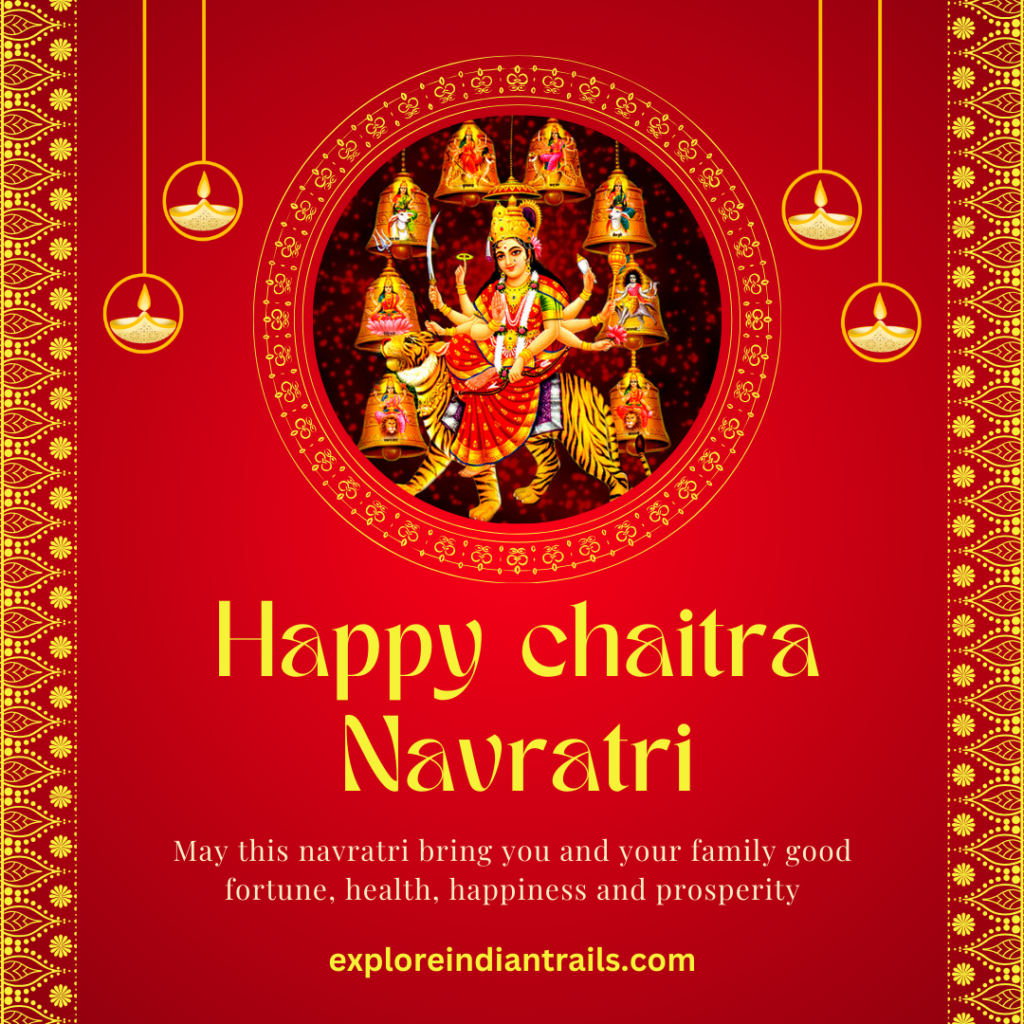Chaitra Navratri, also known as Vasant Navratri, is a Hindu festival that spans nine days and nights, celebrated in the Hindu calendar month of Chaitra, usually falling in March or April. This festival holds profound significance in Hindu culture, commemorating the divine feminine energy and symbolizing the triumph of good over evil. Each day of Navratri is dedicated to worshiping different forms of the goddess Durga, empowering devotees with spiritual growth, inner strength, and renewal.

The festival of Chaitra Navratri holds deep-rooted cultural and religious significance. It marks the onset of spring, a season of rejuvenation and new beginnings. The word “Navratri” translates to “nine nights” in Sanskrit, referring to the nine days of reverence and devotion observed during this auspicious period. It is believed that during these nine days, the goddess Durga, along with her various incarnations, descends to the earthly realm to bless her devotees and rid the world of negativity and darkness.
Chaitra Navratri holds special significance for devotees who observe fasting, prayer, and meditation during this period. It is believed that these practices purify the mind, body, and soul, allowing individuals to connect more deeply with the divine and attain spiritual enlightenment. The festival also serves as a time for introspection, self-discipline, and the cultivation of virtues such as humility, compassion, and gratitude.
Each day of Chaitra Navratri is dedicated to the worship of a different form of the goddess Durga, known as the Navadurga. These forms include Shailaputri, Brahmacharini, Chandraghanta, Kushmanda, Skandamata, Katyayani, Kalaratri, Mahagauri, and Siddhidatri. Devotees offer prayers, perform rituals, and recite hymns and mantras dedicated to each form, seeking blessings for health, prosperity, and spiritual well-being.
One of the highlights of Chaitra Navratri is the tradition of Kanya Puja, also known as Kanjak or Kumari Puja, where young girls representing the divine feminine are worshipped as manifestations of the goddess Durga. These girls, usually between the ages of 2 and 10, are adorned with traditional attire and jewelry, and offerings of food, sweets, and gifts are made to them. This ritual symbolizes the reverence for the feminine energy and acknowledges the innocence, purity, and divine qualities inherent in young girls.
Chaitra Navratri culminates with Ram Navami, the birthday of Lord Rama, which falls on the ninth day of the festival. This day holds great significance for devotees, who celebrate the birth of Lord Rama, an embodiment of righteousness, virtue, and devotion. Temples are adorned with lights and decorations, and devotees participate in prayers, bhajans (devotional songs), and processions to honor the life and teachings of Lord Rama.
The celebration of Chaitra Navratri is not limited to religious rituals; it is also a time for social gatherings, cultural events, and festive fervor. Communities come together to organize traditional dances such as Garba and Dandiya Raas, where people dance in circles to rhythmic beats, celebrating the joy of life and the spirit of togetherness.
In essence, Chaitra Navratri is a celebration of devotion, renewal, and spiritual awakening. It symbolizes the eternal battle between good and evil, light and darkness, and the victory of righteousness over injustice. Through fasting, prayer, and rituals, devotees seek to purify their hearts and minds, inviting the blessings of the divine into their lives. As the festival draws to a close, it leaves behind a sense of inner peace, harmony, and gratitude, inspiring individuals to embark on their journey with renewed faith and determination.

[…] दुर्गा, हिंदू धर्म की माता के नौ रूप, एक अद्वितीय समूह हैं, जो समाज में […]